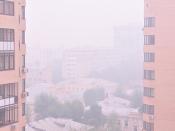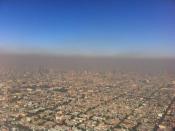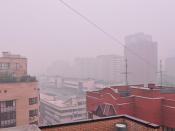Xxxxx Xxxxxx
Gifted Chemistry IB
Alternative Assessment
1997 March 19
Photochemical Smog
Historically, the term smog referred to a mixture of smoke and fog, hence the name smog. The industrial revolution has been the central cause for the increase in pollutants in the atmosphere over the last three centuries. Before 1950, the majority of this pollution was created from the burning of coal for energy generation, space heating, cooking, and transportation. Under the right conditions, the smoke and sulfur dioxide produced from the burning of coal can combine with fog to create industrial smog. In high concentrations, industrial smog can be extremely toxic to humans and other living organisms. London is world famous for its episodes of industrial smog. The most famous London smog event occurred in December, 1952 when five days of calm foggy weather created a toxic atmosphere that claimed about 4000 human lives. Today, the use of other fossil fuels, nuclear power, and hydroelectricity instead of coal has greatly reduced the occurrence of industrial smog.
However, the burning of fossil fuels like gasoline can create another atmospheric pollution problem known as photochemical smog. Photochemical smog is a condition that develops when primary pollutants (oxides of nitrogen and volatile organic compounds created from fossil fuel combustion) interact under the influence of sunlight to produce a mixture of hundreds of different and hazardous chemicals known as secondary pollutants. Development of photochemical smog is typically associated with specific climatic conditions and centers of high population density. Cities like Los Angeles, New York, Sydney, and Vancouver frequently suffer episodes of photochemical smog.
One way in which the production of photochemical smog is initiated is through the photochemical reaction of nitrogen dioxide (NO2) to form ozone. There are many sources of photochemical smog, including vehicle engines (the number one cause of photochemical...


